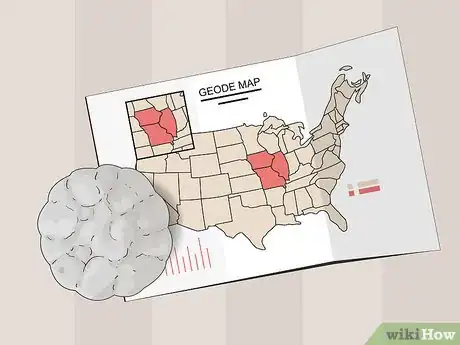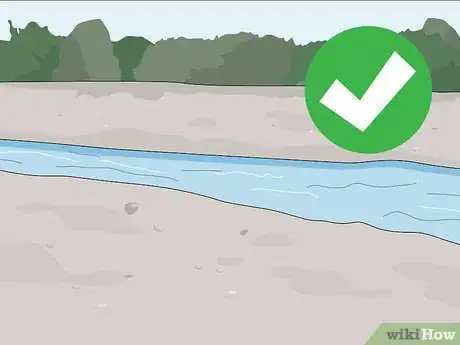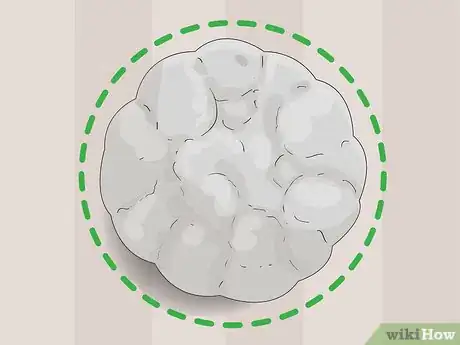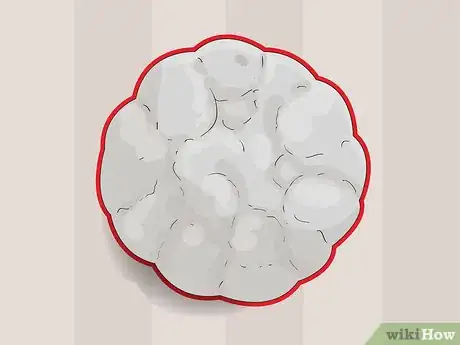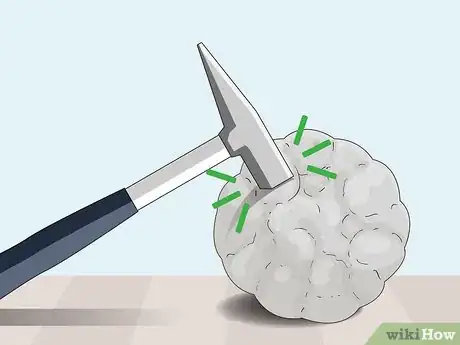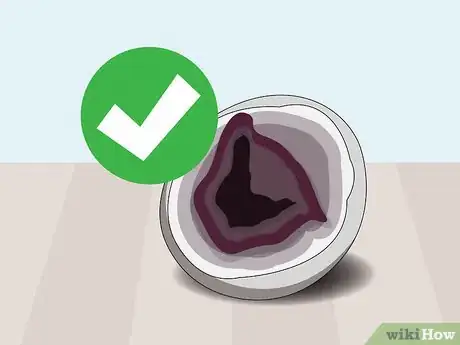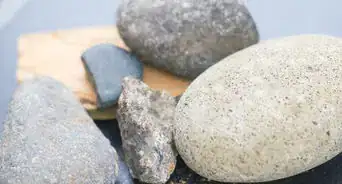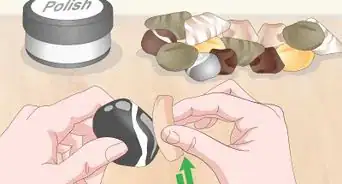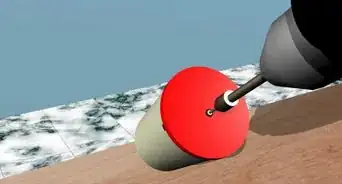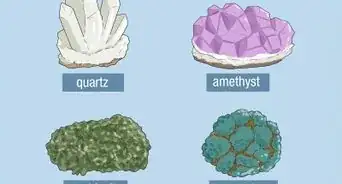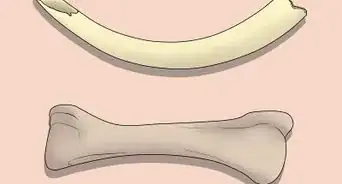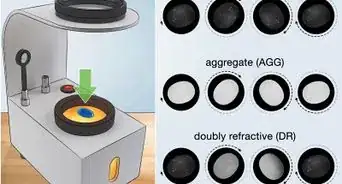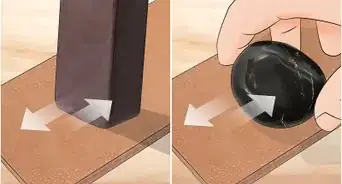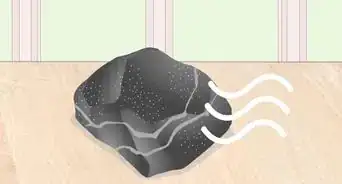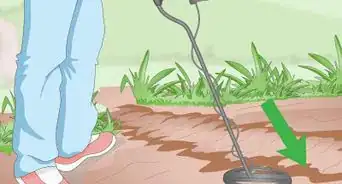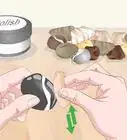This article was co-authored by Lois Wade, a trusted member of wikiHow's volunteer community. Lois Wade has 45 years of experience in crafts including sewing, crochet, needlepoint, cross-stitch, drawing, and paper crafts. She has been contributing to craft articles on wikiHow since 2007.
There are 7 references cited in this article, which can be found at the bottom of the page.
wikiHow marks an article as reader-approved once it receives enough positive feedback. This article received 19 testimonials and 88% of readers who voted found it helpful, earning it our reader-approved status.
This article has been viewed 905,279 times.
Learn more...
Though geodes may look like ordinary rocks, they conceal a hollowed interior that is chock full of different colored minerals and rocks such as amethyst, quartz, agate, and jade. Geodes form naturally over time as a result of specific geological processes and can be found in Mexico and many regions of the United States, such as the Southwest, Midwest, and Southeast. With a few quick tips and a little patience, you'll be able to spot these natural wonders hiding in plain sight!
Steps
Knowing Where to Look
-
1Consult a geode map. Use a reliable guide map when you search for geodes. Rockhounds have gone before you and can get you into areas where finding a geode is much more likely. Geodes are specific geological formations that only result in particular regions. [1]
- Within the United States, geode maps identify areas of the Midwest such as Illinois, Iowa, and Missouri as well as areas in the Southeast such as Kentucky, Tennessee, and South Carolina as common geode locations.
- Geode maps identify Brazil, Namibia, Uruguay, Mexico as top areas around the world where geodes are located.[2]
-
2Survey your surroundings for likely geode locations. Learn to identify common signs that you may be searching in a location where geodes are likely to be found. When you are hunting for geodes in nature, look for limestone and basalt rocks. These rocks are often key to the formation of geodes. Geodes are also commonly found in lake or river beds.[3]
- Geodes are often formed in stratified sedimentary carbonate deposits such as limestones and dolomites.
- Stratified volcanic deposits such as basalt and tuffs rocks also lead to geode formation.
Advertisement -
3Verify whether you are on private property. Check surrounding signs to ensure you are not scouting for geodes on private property. Before you search for geodes on private property, make sure to ask for permission.[4]
- Even if you are scouting for geodes on public land, it might be protected by a nature preserve, which would mean you might not be permitted to remove natural items from the property.
Spotting a Geode
-
1Look for round rocks. Look for medium-sized rocks that appear to be more round than surrounding rocks. Geodes look a lot like normal rocks but can sometimes have an egg-like shape that distinguishes them.[5]
- Sharp, pointy rocks rarely contain geodes.
-
2Check the surface for bumps. Look for rocks that have a unique, bumpy texture on the exterior. Geodes are rarely perfectly smooth.[6]
- The texture of a geode’s exterior may have a cauliflower-like appearance.
- Inspect the surface for any signs of minerals inside. Sometimes traces of the inside crystals are visible on the surface.
-
3Test whether the rock has a hollow interior. Pick up the rock and assess its weight. If the rock feels lighter than that surrounding rocks, it may be a geode. Geodes have a hollow space inside, which is what allows the crystals to form.[7]
- You can also shake the rock next to your ear to test whether it is hollow. You may hear small pieces of rock or crystal rattling around inside if it is hollow.
Looking Inside
-
1Crack open the rock with a hammer. Use a rock hammer or pickax to crack open the suspected geode. Place the rock on the ground and strike it in the center with a hammer to split it into two pieces. While there are clues that can lead you to geodes, the only way to verify whether you’ve truly found one is to take a look inside.[8]
- Make sure to wear safety goggles while trying to open the geode.
- If you do not want to attempt to open the geode yourself, you can also take it to a rock or gem store to have it opened for you.
-
2Identify the minerals inside. Use a mineral identification key to determine what kind of mineral your geode contains. Match the descriptions in the key to the appearance of the crystals found inside of your geode in order to properly identify what kind you have unearthed.[9]
- Mineral keys describe the mineral’s habit, which refers to its key characteristics and features.
-
3Cut and polish your geode. Use a chisel and hammer to break off pieces of the geode to clean and polish. Use a handheld rotary sander to grind the geodes into shape then rub them with a polishing cloth until you begin to see luster.[10]
- Polishing your geode will bring out the most in its beauty.
- You can also coat your geode with mineral oil to increase its luster.
Community Q&A
-
QuestionI live on the outskirts of Columbia, SC (in the countryside). I dug up some mixed quartz pieces along my Lake Murray property. Are they geodes? Worth cracking?
 Dylan MajorsCommunity AnswerYes! Your land has the right conditions to be be growing minerals such as quartz, and more importantly geodes! They're definitely worth cracking. Even if they aren't rare or uncommon, even the most common geode can look pretty.
Dylan MajorsCommunity AnswerYes! Your land has the right conditions to be be growing minerals such as quartz, and more importantly geodes! They're definitely worth cracking. Even if they aren't rare or uncommon, even the most common geode can look pretty. -
QuestionAre they heavy or do they sound hollow inside?
 Community AnswerThey tend to be lighter than other stones of the same size. If you shake it gently and hear a rattling sound, it's hollow. Some geodes don't rattle and are solid, but still beautiful when opened.
Community AnswerThey tend to be lighter than other stones of the same size. If you shake it gently and hear a rattling sound, it's hollow. Some geodes don't rattle and are solid, but still beautiful when opened. -
QuestionHow much is a geode worth?
 Community AnswerThat depends on the size and they type of crystals inside; amethyst is more valuable than quartz.
Community AnswerThat depends on the size and they type of crystals inside; amethyst is more valuable than quartz.
References
- ↑ https://ourpastimes.com/identify-geode-5868895.html
- ↑ https://geology.com/articles/geodes/
- ↑ https://geology.com/articles/geodes/
- ↑ https://sciencing.com/minerals-gems-virginia-7842102.html
- ↑ http://www.gemcoach.com/how-to-hunt-for-geodes/
- ↑ http://www.gemcoach.com/how-to-hunt-for-geodes/
- ↑ https://ourpastimes.com/identify-geode-5868895.html
- ↑ https://ourpastimes.com/identify-geode-5868895.html
- ↑ http://www.minsocam.org/msa/collectors_corner/id/mineral_id_keyi8.htm
About This Article
To identify an unopened geode, examine a medium-sized rock to see if it's rounder and more egg-shaped than the rocks around it, which could be a sign that it's a geode. Also, carefully inspect the surface of the rock to see if it's bumpy since geodes are typically bumpy on the outside. You can also shake the rock next to your ear to see if you hear rattling inside, which would mean the rock is hollow like a geode. To learn how to break open and examine a geode, scroll down!
